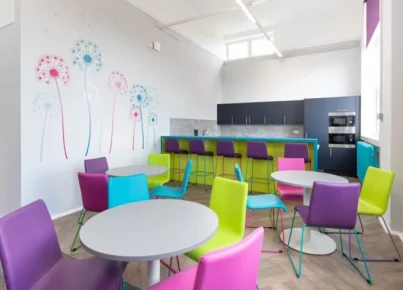School culture has a significant impact on the success of both students and staff. A positive school culture can lead to improved student engagement, increased achievement, and a better work environment for teachers. As a principal, you play a crucial role in shaping your school’s culture. Here are eight ways to build a positive school culture now:
1. Develop a clear mission statement:
Create a clear, concise mission statement that outlines the goals and values of your school. Involve students, staff, and parents in the process to ensure that everyone has ownership and understands what the school stands for.
2. Foster open communication:
Encourage honest and open communication between staff members, students, and parents. Establish regular forums for discussions, meetings, and brainstorming sessions so that all stakeholders can express their ideas, concerns, and celebrations.
3. Create a welcoming environment:
Make sure that your school is clean, well-maintained, and inviting to everyone who enters. This includes creating safe spaces where students feel comfortable sharing their thoughts and feelings without fear of being judged.
4. Recognize and celebrate achievements:
Take time to acknowledge the accomplishments of both staff and students regularly. Celebrate milestones together – whether it’s a student achieving an academic goal or a teacher receiving an award – to foster a sense of unity and pride in the community.
5. Encourage collaboration:
Promote teamwork among teachers by providing opportunities for them to collaborate on projects or share best practices with one another. Encourage cross-curricular connections so that teachers can support each other in delivering comprehensive instruction throughout the school day.
6. Provide professional development opportunities:
Support ongoing learning and development for your staff by offering professional development workshops, conferences, or other educational opportunities focused on fostering positive school culture.
7. Implement social-emotional learning programs:
Integrate social-emotional learning (SEL) programs into your curriculum to help teach students important life skills such as problem-solving, conflict resolution, and empathy. Implementing SEL programs in your school can have long-lasting effects on student behavior, academic performance, and overall well-being.
8. Act as a role model:
Demonstrate the values and behaviors you would like to see in your staff and students every day. Model respect, kindness, and commitment to high expectations for all members of your school community.
In conclusion, creating a positive school culture is essential for the overall success of your school community. By implementing these strategies, principals can foster an environment where students feel inspired to learn, teachers feel motivated to teach and collaborate, and the entire community takes pride in their school’s accomplishments. Start working on building a positive school culture today by following these eight steps.




